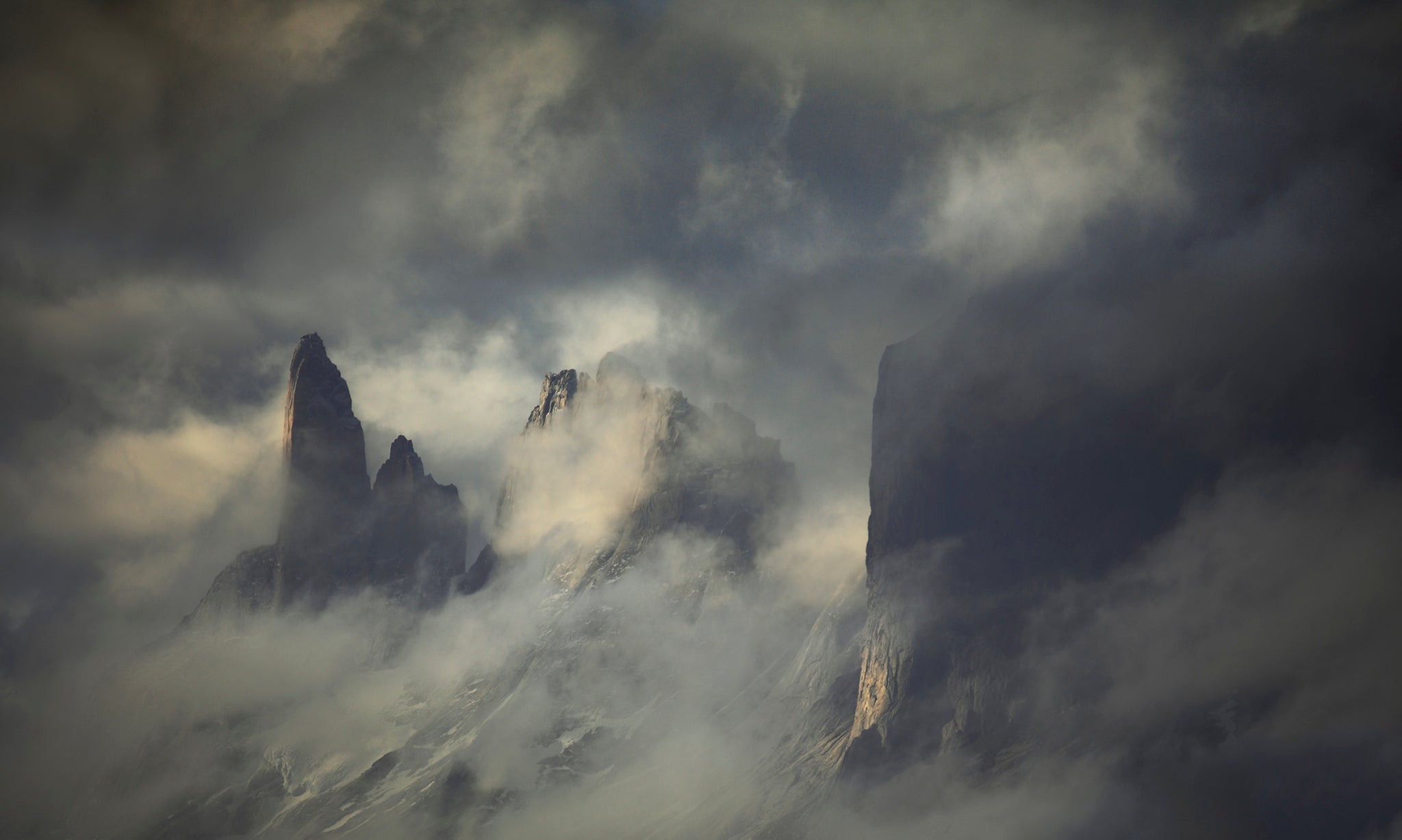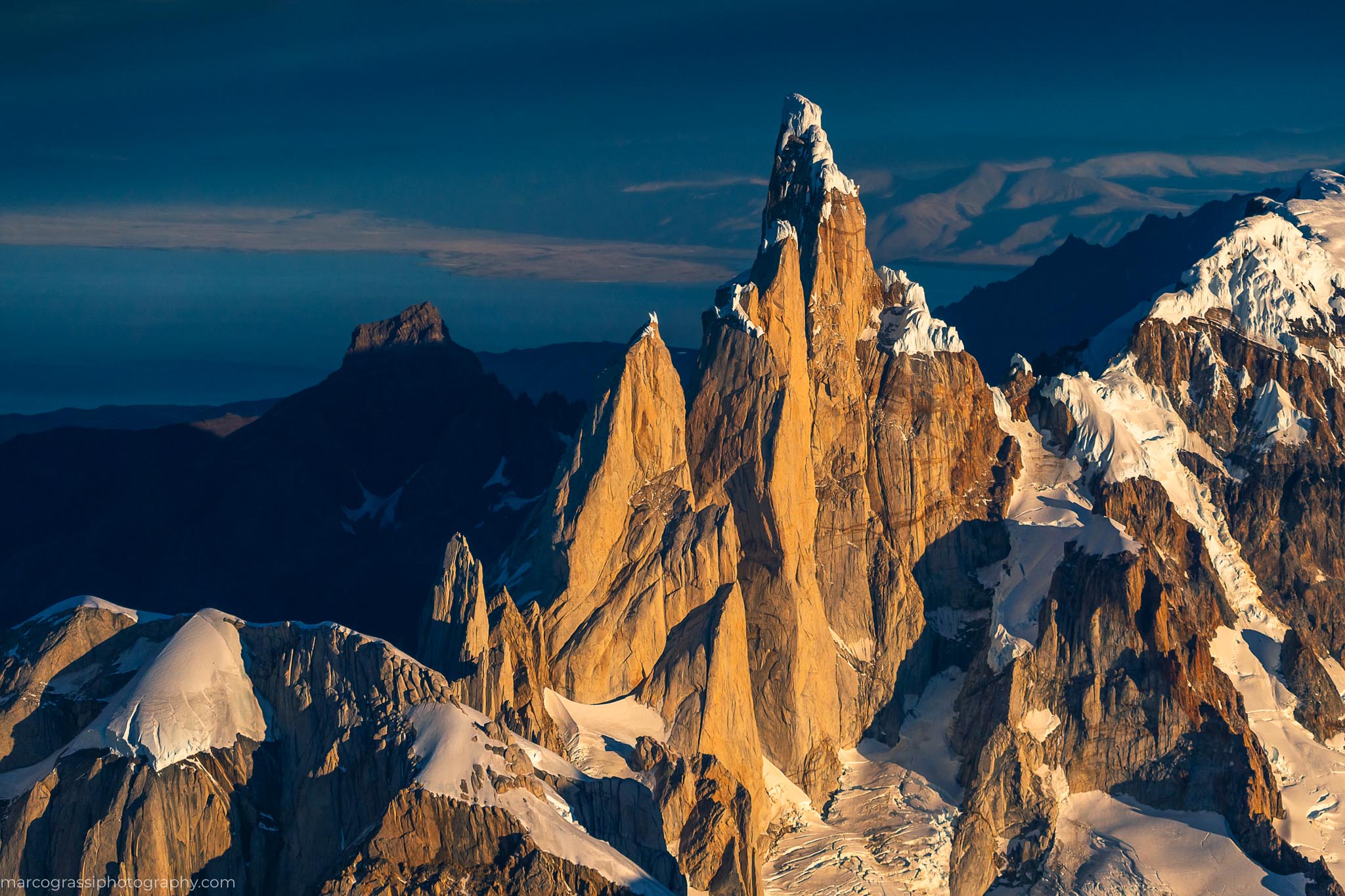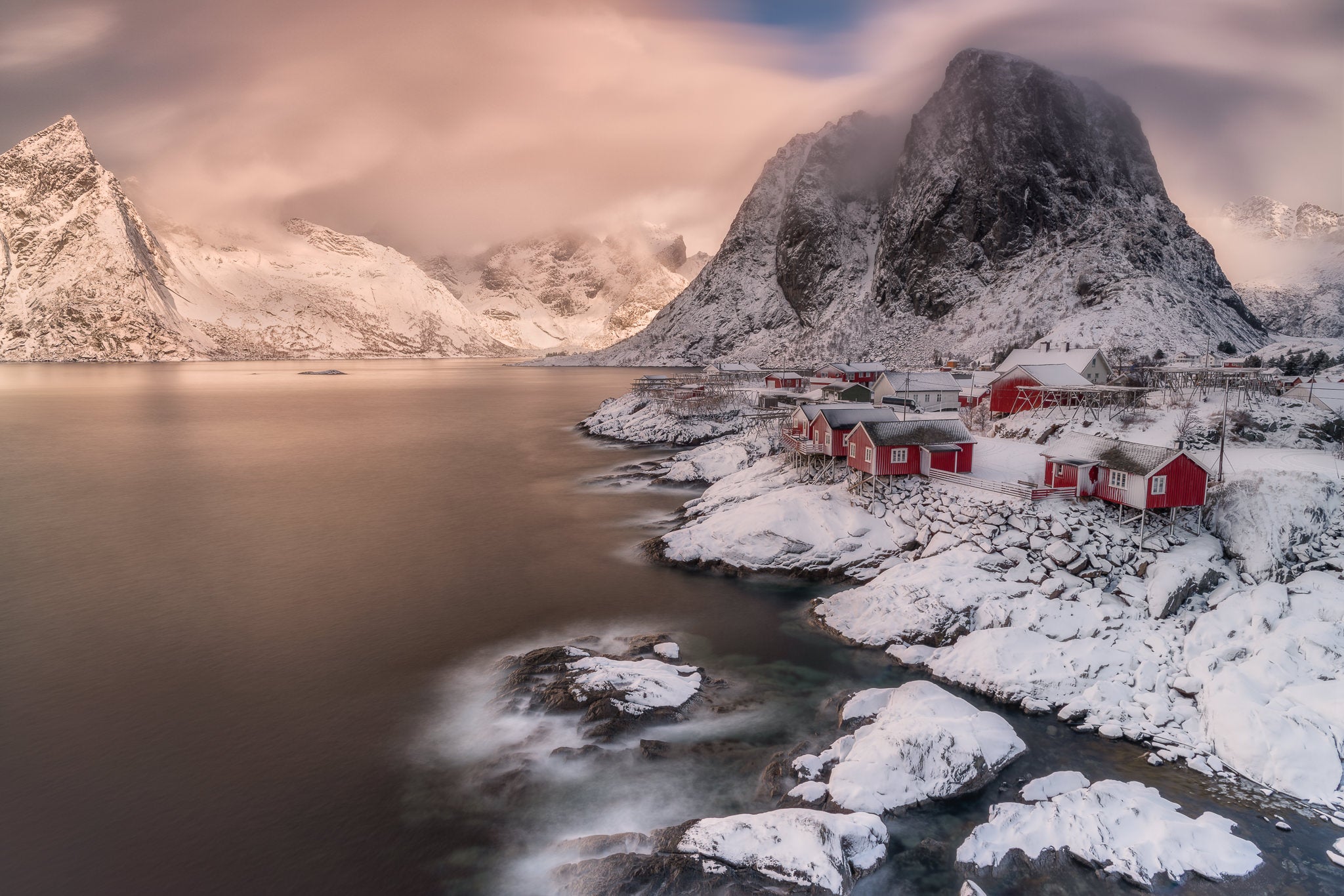
There are very few people as talented in the art of landscape photography as Sapna Reddy. Based in the USA, this incredible photographer balances her passion for nature with a strong and enviable career in the medical field. Having travelled far and wide, the experiences that she has gained have contributed to her appreciation for the beauty of our natural world, as well as the understanding of its fragility and our need to protect it.
This month, we had the honour of chatting with Sapna about the importance that photography holds for her in being able to express her creative vision. We also gained some insight into the challenges that she has faced juggling two professions as well as her thoughts on how landscape and nature photographers can make a positive impact with their work.
 Sapna Reddy is a landscape photographer based in the USA. Photo by: 'Sapna Reddy'.
Sapna Reddy is a landscape photographer based in the USA. Photo by: 'Sapna Reddy'.
- Learn about Hard vs Soft Graduated Neutral Density Filters for Landscape Photography
- Check out these Svalbard Photo Tours and Workshops
- Discover the Recommended Camera Settings for Landscape Photography
Hello Sapna! Thank you for joining us. For people who may not be familiar with you and your art, how would you describe yourself and the type of work you do with your photography? Where did it all begin?
Thank you for the opportunity to share something about myself. I am a nature and landscape photographer based in California. The journey into photography was a consequence of my love for the outdoors and interest in exploring different parts of the world. Initially, I carried a camera to document my travel and adventures. Later on, this evolved into a process of creative expression. The images generated had less to do with the scene in front of me and more to do with my feelings towards the landscape.
 Sapna creates images that express her feelings towards the landscape. Photo by: 'Sapna Reddy'.
Sapna creates images that express her feelings towards the landscape. Photo by: 'Sapna Reddy'.
What do you do when you’re not shooting?
Currently, I am pursuing a dual career in medicine and photography. As a physician, I analyse images for establishing diagnosis and to aid in achieving cure. The analysis of images as a radiologist requires having an extensive visual database, being good at pattern recognition and identifying what is not normal within the image presented.
In contrast, the visual analysis done for nature photography is to identify what I connect with most in the scene before me and to create an image that tells the story of that experience. The former involves a formal structure, extreme discipline in analysis and conformity to established standards. The latter involves thinking and seeing beyond the obvious, deep introspection and the ability to freely express one’s own creativity.
Who have been your mentors throughout your journey so far? How have they contributed to how you practice photography today?
I have been fortunate to have received tutelage from various individuals highly respected in the field of photography. What had the most impact for me was their deep rooted desire to have adventures in the wild and the therapeutic relationship they shared with nature. I am especially grateful to Marc Adamus for teaching me to push myself, both in terms of physical endurance in nature exploration as well as approach to creative expression.
Lately, I have been drawn to the strong minimalistic approach of Benjamin Everett. There is a feeling of vast openness and simplicity to his compositions. They feel uncluttered and convey a sense of serenity. I hope to learn how to incorporate these characteristics into my own images in the future.
 We can learn from every individual we encounter. Photo by: 'Sapna Reddy'.
We can learn from every individual we encounter. Photo by: 'Sapna Reddy'.
What is your favourite thing about working as a professional landscape photographer? Have there been any challenges that you’ve had to face in your career?
Spending time in nature is therapeutic for me. So I love to do that. In addition, being able to create images which are a result of that experience to share with others is rewarding, for sure.
Being a physician and a photographer, I am interested in creating an ambience of healing for my patients. Modern medicine is very useful in treating the various illnesses of the human body. To cure the mind however, I feel the best approach is to bond with nature, indulge in creating or appreciating art and spend time in quiet places that alleviate stress and calm the mind. Being able to use my images to alter the ambience of hospital environments and give people something pleasant to focus on during periods of potential stress has given me an avenue to combine both of my passions. It is always a pleasure to hear from an individual that seeing one of my images has brightened up their day. This positive impact on a viewer is a huge motivation to the pursuit of this art form.
My biggest challenge has been limitations of time. Pursuing two careers means you have less time for both. This has a direct impact on growth in the field and involves disciplined and efficient time management.
The world is full of incredibly beautiful locations for photography. I'm sure you have a long list of destinations that you'd like to visit. How do you decide when and where to travel?
When to travel involves arranging trips around the weather or light and seasonal changes. I am eager to travel to any corner of the world that has interesting landscapes to photograph. Having interesting atmospheric conditions makes it easier to generate impactful images. I am also more partial to hiking in the mountains. Thanks to social media, I am connected to my peers in photography from various corners of the globe and come across inspiring images on a daily basis. I grew up poring over the pages of National Geographic magazine and was always dreaming of visiting these faraway places. That dream is finally coming true.
 Visiting far away places is a dream of many photographers. Photo by: 'Sapna Reddy'.
Visiting far away places is a dream of many photographers. Photo by: 'Sapna Reddy'.
You’ve travelled to many places all around the world and captured some extraordinary landscapes. Do you have a place that you love to return to time and time again for photography? What is it about this place that keeps drawing you back?
When I visit a new place for photography, my senses are overwhelmed and I am in hyperdrive mode. This is exciting and the adventure of exploration is deeply rewarding. However, the places that I connect to the most are ones that I visit often. Places that are closer to home, that I have seen in different light, varying seasons and know well. Yosemite is one such place for me. Have spent innumerable hours here, many of which were spent in hiking/camping/observing rather than actively shooting. This place inspires the artist in me and rekindles my love for nature which was the primary reason for embarking on this journey. It's a therapeutic place where I find my Zen.
 The places that we visit most often are usually the ones we connect with. Photo by: 'Sapna Reddy'.
The places that we visit most often are usually the ones we connect with. Photo by: 'Sapna Reddy'.
What kind of work goes into the construction of your photographs? Do you find it difficult to maintain photographic reality through the fine art process?
The initial work is all directed towards placing myself into circumstances that make it possible to generate interesting images. Weather and light have a huge influence in planning the shoot and selecting the location.
Once in the field, I usually do not have any preconceived notions of what to shoot or how. Instead, I let the light guide me. The images are based on what visual elements command my attention.
The compositions are focused on showcasing those visual elements to the best of my ability. I am less concerned with factual documentation of exactly what the scene looked like before me and more concerned about achieving an image that conveys my feelings of what it was like to experience being there and in some instances, what I am feeling at the time of actual post processing. Having said that, I am a strong believer that the goal of post processing is to create an impactful image which looks natural and believable.
Describe the technical workflow that you do in post-production. How do you utilise software to evoke emotion from the viewer and to tell a story with your photographs?
The primary goal of my post processing is to create a strong visual pathway through the composition. This is achieved by shaping light, colour and texture through the image to convey a sense of depth and create focal points that the viewer’s eyes will rest upon.
Post processing gives us the opportunity to put a piece of ourselves as artists into the image created. The mood rendered can influence the emotional impact of the image. All of my images are post processed using Adobe Photoshop. I have often said I photograph because I cannot paint. This is especially true when it comes to post processing, where subtle adjustments to small areas in the composition are akin to applying brush strokes to an emerging image on canvas. To me, post processing is as important as the initial image acquisition in the field. Both require deliberate intent with careful contemplation directed towards the desired end result.
What thoughts about nature would you like people to come away with after they look at your photos?
We are so blessed to have this beautiful planet to call home. I hope my images instil a sense of love for nature and the understanding of how important these places are for our wellbeing as a species. I hope the images convey respect and a deep sense of gratitude along with an innate desire to protect these precious places for future generations.
 We need to protect nature for future generations to come. Photo by: 'Sapna Reddy'.
We need to protect nature for future generations to come. Photo by: 'Sapna Reddy'.
Is there anything in particular that you think people should have in their possession – besides gear – to help equip themselves for success?
The most important thing in my opinion is the attitude we bring to this art form. I feel it’s important to approach nature with humility, respect and self discipline. To realise it’s not about gaining fame or money. Rather, it is about making the journey of life interesting and fulfilling and ensuring that opportunity for others is not impacted by our actions in the field.
Where do you go for inspiration when you reach a creative plateau?
I have multiple roles in life. In addition to being a photographer and physician, I am a mother, wife, daughter, friend, teacher, etc. When I reach a creative plateau, it’s usually because some other stresses in life are hindering my ability to see and express myself. My mind is usually preoccupied by some other facet of life. Instead of forcing myself to create images during such a phase, I choose to spend time in nature without my camera. Just hiking through a foggy forest, listening to the babbling of a stream, or watching a sunset helps to ease the tension and makes me realise how transient our journey in this cosmos is – how small our problems really are and how insignificant these moments of transient stress. When my mind is calm, I am able to be creative again.
In this highly visual era, what impact can landscape photography have upon people? Do you think it can be used as a medium to effect any kind of positive change?
We are in a period of environmental crisis. Generating images that portray how precious the wild places are is important. However, as a society, we are also at a low point where exploiting nature for popularity on social media is an accepted norm. It saddens me to see this dangerous trend. It is time to increase awareness and educate ourselves on how to enjoy these wild places with minimal detrimental impact to them. As nature photographers, we have a collective responsibility to do our part towards this endeavour – to call out behaviour that is harmful to environment and to be personally responsible when in the field. To bring awareness to issues of global warming and climate change and speak with unified voices to influence change at a global level.
 Photographers should be responsible in nature. Photo by: 'Sapna Reddy'.
Photographers should be responsible in nature. Photo by: 'Sapna Reddy'.
How can photographers travel and photograph landscapes whilst making sure that they’re not having a negative impact on the environment they’re shooting in?
First of all, we need to understand that what we are photographing is far more important than the picture we are generating. We need to be mindful of the impact we are having during our presence in the field and to minimise our imprint as much as possible. We need to be humble, responsible and respectful and teach the same to those who follow us. Respecting regional guidelines, and speaking up when these are violated is important.
Do you think nature photographers should have a responsibility to educate the public on conservation issues? How can they do this effectively with their photography?
Not everyone has the opportunity to travel to places of wilderness or spend time in nature. Landscape photography gives us the opportunity to share this experience with everyone. It is an avenue for fostering love for the wild places that one may never have visited or seen. This is an art form that can be used to convey how important conservation measures are to our planet. Organisations such as the International League of Conservation Photographers can have a positive impact on policy and decision making. On a personal level, sharing a story with every image taken gives us a chance to drill the message of how important it is to protect the places we photograph.
 Sharing a story with every image allows photographers to convey the importance of the need to protect nature. Photo by: 'Sapna Reddy'.
Sharing a story with every image allows photographers to convey the importance of the need to protect nature. Photo by: 'Sapna Reddy'.
Thank you for sharing your thoughts with us, Sapna. Tell us a little bit about what you’re currently working on and what’s in store for you in the coming year.
The first half of the year will be spent traveling to Iceland, China, New Zealand, Tibet and India for photography. I am especially excited about being in the Himalayas for the month of June and exploring various locations. I will be witnessing the annular solar eclipse over Lake Mansarovar and hope to circumambulate Mount Kailash.
For the later part of the year, I will be focusing on photography within America. I am hoping to fine-tune my style of photography and improve in terms of simplifying my compositions. I will also be giving some presentations at the national and international level and hope to continue to learn and teach through the year.
In addition, I am looking forward to launching a new version of my website in the early part of this year. Above all, I am looking forward to a year filled with marvelling at the majestic landscapes and indulging in adventures that will force me out of my comfort zone on a repeated basis.
For more information on Sapna Reddy's work, you can visit her website or find her on Facebook and Instagram.
Immerse yourself in nature and explore as you travel with your camera, just like Sapna! Check out our range of international photo tours and photography workshops.












